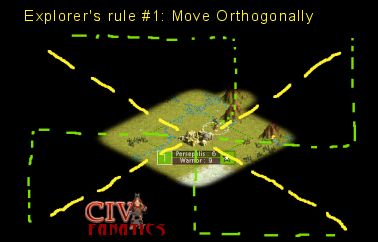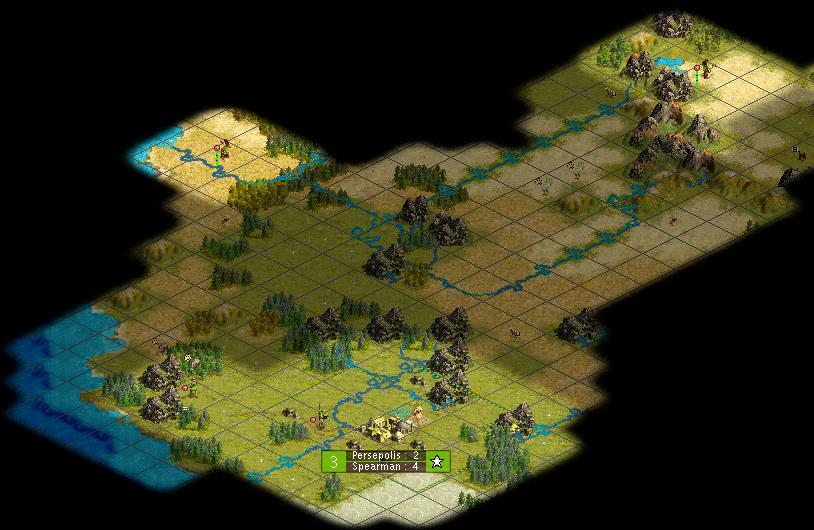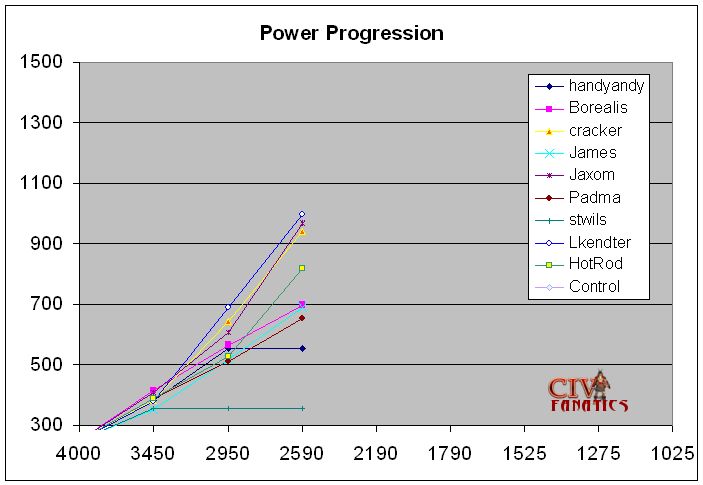Dejvu : 2590 - 2190
2590 (0):Nothing to change, imagine that

2550 (1): Pasargadae builds worker starts granary, may change to granary with sooo much good land to the north the more settlers the better. Want a city on the coast asap, I see a coast to the east.
2510 BC (2): Learn WC, start Iron working for my immortals. MM persepolis to grow in 2 get new settler in 2.
2470 BC (3): Continue to explore to the NE.
2430 BC (4): Settler completes and head to north cow and at any possible other civs. Start another settler, reduce lux for now.
2390 BC (5): MOre warrior movement.
2350 BC (6): same
2310 BC (7): Found Susa on the river Bend by the cows, start warrior. See furs and more wheat to the NE. MM Capital to get settler and growth in 3 turns. Increase lux to 10% to avoid riots.
2270 BC (8): more exploring.
2230 BC (9): Settler next turn.
2190 BC (10): Persepolis builds settler and starts another. Settler heasing toward SW coastline. See incense and a hut on a northern hill top, still no contacts, IW due in 3 turns, 58 gold in the bank.
2150 BC (1): Settler moves south W, warriors continue to the north and NE.
2110 BC (2): Susa builds warrior will go pop the hut. Starts on barracks. Reduce research to 70%.
2070 BC (3): Learn IW start on the wheel. There are 2 iron deposits one to the North and the other to the Western coat by the ivory. MM capital again to ensure growth and the new settler match. Found Arbela on the river on the coast, some overlap but decided on the river site, start warrior.
2030 BC (4): Pop the hut and learn Mysticism.
1990 BC (5): More exploring.
1950 BC (6): Persepolis builds settler and starts another., Settler heading north.
1910 BC (7): Settlers and warrior continue moving. NO sign of barbs yet but may be a concern soon.
1870 BC (8): Pasargadae builds granary starts settler. Arabea builds warrior starts worker.
Stopped for dot map break, many options for city placeement at this point, very fertile lands and no AI to contend with.
1830 BC (9): First contact with the zulu. They lack Masonry only, decide to hold for one more turn. Only 1 turn away from the wheel at this point.
1790 BC (10): Learn the wheel begin on writing. Decide to hold onto Masonry, they can offer up 70 gold but will hold it for now.
Addmittedly I am running a risk without any homeland protection but have yet to see a threat with a barracks due in susa vet troops are right around the corner.
1750 BC (1): See another hut to the NE. more wheat to the NW. Horses to the west across the sea.
1725 BC (2): Persepolis builds a settler and starts yet another. Hut to the north gives barbs. move settler toward my next city spots. MM Pasargadae to grow in 2 settler in 2.
1700 BC (3): Worker in Arbela completes start temple. Found Antioch to the north on the river, start temple.
1675 BC (4): Pasargardae completes settler starts another.
1650 BC (5): more movement.
1625 BC (6): Found the zulus territory. Found Tarsus, start worker. Susa completes baracks starts spearman.
1600 BC (7): Contact the Iroquois, they too lack masonry.
1575 BC (8): Another settler completes heading to the inscence and flood plains.
1550 BC (9): Found Gorduim to the NE. start warrior.
1525 BC (10): Learn writing, start code of laws for the necessary courthouses. Write 2 embassies with Zulu and Iroqouis for 36 and 38 gold respectively. Pasargdae builds settler starts another. Sign ROP with Zulu for his 29 gold.
I realize this may be early but I will be travelling next week and wanted to submit my next 3 ten turn blocks to add to the discussion.
http://civfanatics.net/uploads2/ha1_hotrod_2190BC.zip
http://civfanatics.net/uploads2/ha1_hotrod_1790BC.zip
http://civfanatics.net/uploads2/ha1_hotrod_1525BC.zip





 .
.






 )
)





